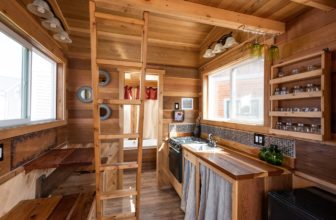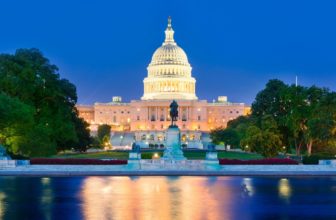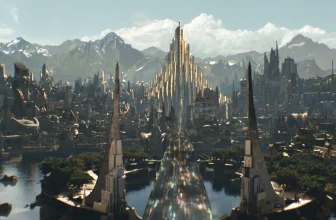The Significance of Waterfront Development
Landscape design of urban waterfronts is closely tied to the ecological, recreational and aesthetic value of these areas. It is also an important part of the sensitive and livable urban development. Hence, landscaped waterfront spaces in the urban environment not only provide an enhanced habitat but also, a variety of spaces for different kinds of social activities (Lu, 2013).
Historical Development of Waterfronts
Waterfronts are water resources which have played a significant role in most parts of the world throughout history, in the establishment and formation of how these cities were settled and how they’ve established their own identities. The waterfront identifies the water’s edge in cities and towns. Formerly, in pre-industrial cities, waterfront areas were intensely used and thrived with people and activities. However, with the industrial era, this relationship was interrupted specifically in uses related to the huge ports, commercial pockets, industrial spaces, warehouses and transportation hubs. Through the evolution of containerization technology, port activities moved to outside the city. Accordingly, industrial plants were abandoned and forms of transportation changed. Also, with the increase of environmental awareness and as a consequence of the pressure for development in urban areas, waterfronts were ‘reinvented’ in the city. So, the concept of waterfront development integrated with landscape design has emerged.
Concept and Features of Waterfronts
The urban waterfront is defined as: “the dynamic area of cities and towns where land and water meet” (Weijia, 2011). Waterfronts have become increasingly important at different levels and in diverse aspects including economic, ecological, social and cultural.
At the city level, the waterfront is the window reflecting the quality of the city. It contributes to the formation of the city’s image and identity. Many cities are well-known for their waterfront landscapes. Some of these are very traditional such as London, Paris and Venice, while some are modern such as Boston, Sydney and Hong Kong. It can be seen that all these cities have their own unique characteristics. Recently, many waterfront cities have tried to implement measures by which to stimulate economic growth, improve environmental conditions and enhance competitiveness and vitality by taking advantage of their unique waterfronts and utilizing their respective cultural and historical resources.
At the community level, the waterfront is an essential open space which has a close relationship with urban development, such as connectivity, ecological values and recreational opportunities. It is a place where the public can enjoy life and carry out diverse social and cultural activities on a daily basis. Many cities become popular venues and tourist attractions due to their vibrant waterfronts, these also contribute to the local economy, affecting the society that resides there. That is to say that, the waterfront plays a very critical role in shaping the urbanism and landscape of a city (Weijia, 2011).
The Urban Land Institute (2004) argues that, “cities seek a waterfront that is a place of public enjoyment. They want a waterfront where there is ample visual and physical public access – all day, all year – to both the water and the land. Cities also want a waterfront that serves more than one purpose: they want it to be a place to work and to live, as well as a place to play. In other words, they want a place that contributes to the quality of life in all aspects”.
Problems with Waterfronts
Unfortunately, in recent years developments of urban waterfronts have not received sufficient attention in many cities. Waterfronts have heavily degraded and received bad perception from urban dwellers. There are needs for effective urban waterfront development programs to achieve a sustainable landscape development based on ecological protection and recreational opportunities. Nonetheless, urban waterfronts remain as a continuous natural feature within suburbanized landscapes, which make them more important resources for habitat restoration and nature preservation. (UKessays.com, 2013).
The Development of Waterfronts
Evidently, urban waterfronts can provide a high quality landscape space. With the greater emphasis on waterfront development and landscape design, urban waterfronts’ landscape values has recently received more attention.
- Water-related Landscape Design
Most people prefer contact with water. So water-related landscape design should consider the physical and visual access to water for people using the space. What is more, design should analyze people’s practical needs, such as water-related activities. This is significant not only because of the dynamic water landscape but also because of visitor’s safety needs.
In waterfront development, it is important to understand people’s behavior and perception of nature aesthetics for waterfront landscape design. Some research shows that most people prefer semi-natural environments compared to totally natural environments. Though, semi-natural environments can provide some ecological functions, they can cause degradation of the riparian ecosystem. However, the ecological goal is not the only focus on waterfront development but also on social, aesthetic, and economic goals (Lu, 2013).
For example Aiyi Waterfront Park (Jinfeng District in Yinchuan). The distressing fact is that the existing waterfront is poorly-made and, not only divides the water from the city, but also fails to solve the environmental problems of the city. In addition, there is no diversified special or activity experience offered in the waterfront landscape.
As a solution, the proposed development concept focused on three objectives which are: integratingthe city’s local features and character into the design, emphasizing ecology and a ‘green’ approach by stressing on low-carbon consumption, and considering human needs.
The distance between the city and the riverfront is considerable, which proved challenging for the designers to close this gap. Designing pedestrian walkways in a serpentine, wave-like pattern brings the city and the waterfront closer together at regular intervals. It also alludes to the fluid motion of the river and enhances the water experience as well as creating a more organic and natural experience by breaking the rigid landscape line. A vivid eco waterfront image is produced by creating a variety of special sequences overlooking the river. This waterfront park will serve as a landscape landmark, offering visual enjoyment and eco recreation (http://www.archdaily.com).
- Urban Open Space
Also, waterfront developments provide urban open spaces to be used as recreational areas for residents while enhancing the environmental quality. Open spaces provide ecological, social, economic, cultural and physiological services for urban residents such as environmental protection, increased quality of life and scenic views preservation. Open spaces also provide opportunity to exercise and carry out other leisure activities. They are important because they buffer or reduce some urban environmental problems and promote people’s health. From the psychological aspect, people would want to interact with nature, which can improves health through stress relief. (Lu, 2013).
This can be seen in Kowloon Cultural District Park which is a scheme that will activate the waterfront and will create a dynamic green space. The concept plan features outdoor areas for exhibitions and performances, recreational lawns and a waterfront promenade. The design seeks to create an environment that simultaneously connects visitors to the cultural activity of the surrounding area, while providing a space for recreation and relaxation. Cultural attractions will include large-scale outdoor sculpture gardens and installations, in addition to open-air performance spaces for music.
The designers have incorporated topographic variations in the landscape, bike paths and shaded areas to encourage natural balance between recreation and cultural activity. There are outdoor venues which include an Arts Pavilion serving as a small-scale exhibition space, an outdoor stage and a block box theater and two large lawns for outdoor festivals and concerts (Rawn, 2014).
- Urban Waterfront Greenways
Urban waterfront greenways are linear open spaces or parks that are distributed along urban waterways. It is the transition area between urban space and lake, river, or any body of water, providing some ecological functions and benefits. (Lu, 2013).
This can be seen in the Zhangjigang Town River development. The Town River is located at the south of urban core commercial, pedestrian street. It is starts from Gudu Harbor to the east and extends to Gangcheng Blvd to the west with an overall length of more than 2,200 meters and average river width of almost 12 meters. Since the early 1990s, half of the river was covered by houses and the rain sewage directly discharged into the river. The river quality was seriously polluted, the environment was in a mess, the traffic was congested and the buildings were old and shabby.
The comprehensive development of Town River is based on the concept of creating the “City Parlor” of core commercial area. The development tried to control the pollution and import water while recovering the natural ecology of the river; to construct the landscape while providing a more pleasant environment; and to implement comprehensive improvement while improving the infrastructure functions of the entire region.
The Town River was designed in a simple style where designers utilized the pavilion and wall to deduce the peculiar scenery of south of the Yangtze River. The heartland of the riverside area is the general public places, the landscape design is elegant and modern and utilizes boulder strip and granite to create a thick and solid feeling.
The landscape bridge is the central link that connects the north and south area of the river so that it benefits from the daily life of the general public, at the same time it forms a ‘manmade landscape’ over the river. The center stage adds more liveliness to the general atmosphere of the city’s public square. The design of a waterfront footpath adds a romantic atmosphere to people’s life. What’s more, the cascade design increases the water atmosphere to the square, and the three meters drop of cascade creates visually creates a landscape focal point. The sculpture design on the road corner makes the external public space unified with a theme and forms an integral public outdoor landscape.
In the overall landscape design of the waterfront, designers get rid of all the cumbersome notations and keep the most peaceful sense of value, and the Chinese spirit is present without not necessarily using Chinese design elements (http://www.archdaily.com).
The Role of Designers
Thus, designers are to be encouraged to use landscape design in a way to create the image of waterfront development. By thinking of the landscape beyond the waterfront development, we can argue that a fully sustainable waterfront city can be organized at the conception of the project rather than as a prescription after construction (Bradbury, 2010).
To sum up, urban waterfronts can be viewed as the result of interactions between users and their landscape. The waterfront provides many resources and opportunities for the public. In turn, the waterfront landscape, is gradually influenced by users and their activities. Through this cycle, people can gain a better understanding of the waterfront values and potentials. Therefore, the overall waterfront evolution may be viewed as transitions in the relationship between users and waterfronts.
The urban waterfront development issue is complex, multi-purpose and challenging. We can conclude that, with a better understanding of the major transformations and driving forces, involving numerous factors, all of which need to be carefully considered in waterfront developments, otherwise the project may fail. In other words, many issues may be encountered throughout the whole development process. For example, physical planning and design are crucial in achieving success in the development process. The development of the waterfronts’ landscape not only brings environmental benefits, but also social and economic benefits which have further influence on forming the city’s image (Ying and Guanghe, 2009).
At the end of the day, we, as designers, are trying to develop a reasonable landscape structure which can ensure the sustainability of the waterfront landscape.
Written by: Riham Nady
Edited by: Aiysha Alsane
References
– Bardbury, Matthew. (2010). “The Sustainable Waterfront”. 16th Annual International Sustainable Development research Conference 30May-1 June 2010. Hong Kong, China.
– Lu, Li. (May 2013). “Sustainable Landscape Development of Urban Waterfront: A waterfront park design along Sanjiao Lake, Xinmin River and Taizi Lake in Wuhan Economic Development Zone in China”. M.Sc. Dissertation, College of architecture, Planning and Landscape Architecture, University of Arizona. U.S.A
– Pekin, Timur. ed. Ozyavuz, Murat. (2013). “Urban Waterfront Regenerations”. Advances in Landscape Architecutre (Chapter 7). INTECH.
– UKessays.com (November 2013). “Urban Waterfront Revitalization Through Landscape Approach Environmental Sciences Essay”. All Answers Ltd.
http://www.ukessays.com
– ULI-the Urban Land Institute. (2004). “Remaking the Urban Waterfront”. Washington D.C., U.S.A
– Weiga, Shang. (April 2011). “Role of Waterfront in Shaping City Center Landscape: Perception of Tianjin Haithe Riverfront Landscape”. M.Sc. Dissertation, University of Hong Kong. China.
– Ying, Wang and Guanghe, Wang. (2009). “The Researches on Sustainable Development of Urban Waterdfront”. http://seiofbluemountain.com


















